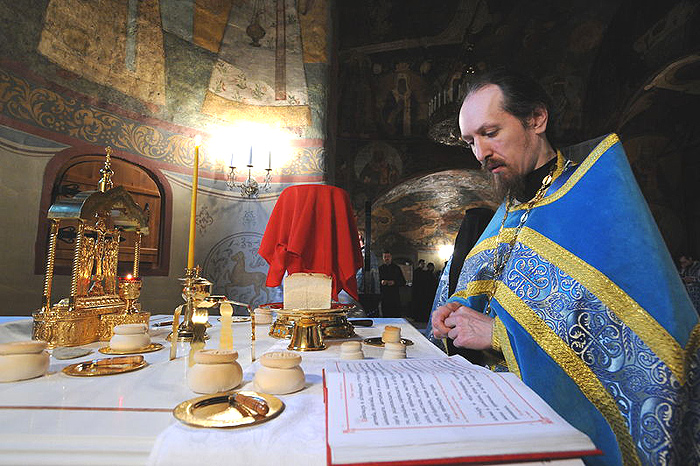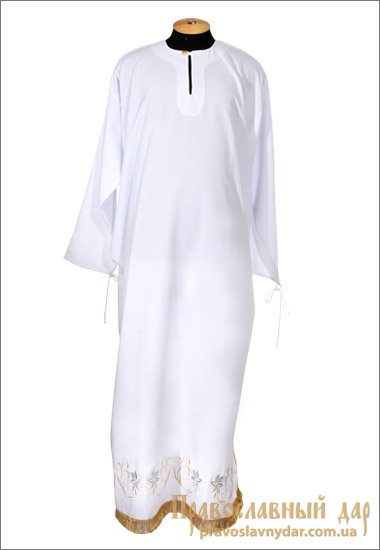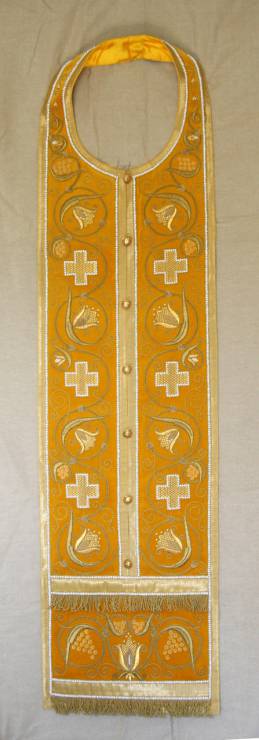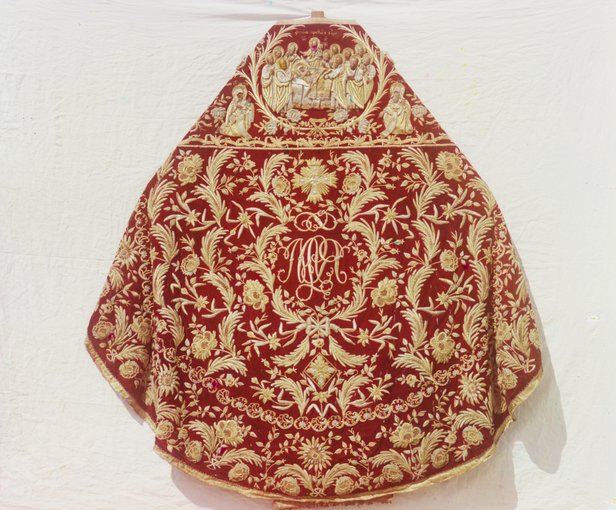
In the second part of this article, we will talk about the liturgical vesting of priests, the history of its appearance, and the symbolic meaning of each garment. This knowledge will help everyone to understand why clergymen dress like that, and what is the meaning and logic in it.
Liturgical vestments, as the name implies, is used by the priests only to perform the necessary services, and especially the Divine Liturgy. In general, the set of clothes is based on two main traditions - Hebrew and Greek. From the Old Testament, the very principle of separate apparel for the clergy was adopted, which should be used only for service. And the clothes themselves were taken from the everyday common culture, which was spread throughout the Roman Empire: for example, the upper cloak, which over time was transformed into felony.
Historically, the process of forming a modern list of priesthood clothes required for worship services was completed, in general, around the 6th century. At this time, among the attire of the presbyter, we can already distinguish: a sub-species, an epitrachel and a garment (or phelon). These three vestments are the most ancient in origin. 

The subspicter is essentially the same sticher worn by the deacon in the Church, but it is made of a thin white fabric and covers the entire figure to the heel. Narrow sleeves are pulled together by special laces. The symbolically white color of the subscript means the purity of life, which the bearer of the sacred dignity must observe, in order to be worthy to serve God. This clothes is worn over on a cassock.
Epitrachel - (with the Greek, that around the neck) a long ribbon that, curving around the neck of the priest, descends down both ends onto the priest's breast and joins them there with the help of buttons. Until the 15th century, during the ordination of priests, the bishop simply transferred the other end of the deacon's orarion through the neck of the protégé. This symbolized the double grace that the priest receives from the Lord, therefore, without a fast-on-meal, the presbyter can not officiate-perform any worship. As early as the 16th century epitracheal stitches were sewn separately, making the part that bends around the neck already and more rounded. In this form, this garment of the priest remains to this day. Epitrachel the priest dresses, performing any service or prayer, she covers the penitents during the resolution of sins on the sacrament of confession.
Felon (Riza) is the priest's upper liturgical garment, in the form of a cape, with a short front part and a head opening. In fact, the phelon is a slightly modified cloak, which was popular in the Mediterranean in the era of antiquity. Thus, most likely the Lord Jesus Christ wore these clothes during his earthly life. Also, such a robe was worn by the apostles. It is difficult to say, when from everyday practical clothing, the phelon became a liturgical garment. However, the fact that this happened even in the time of the first Christians, undoubtedly. 
Initially, the phelon was the same length in front and behind. Subsequently, the front part was shortened to facilitate the opportunity for the priesthood. Nowadays there are two types of felony - Russian and Greek. Phelon Russian cut - in the upper part has a rigid trapezoidal shape that covers the neck and part of the head of the priest. Such garments first appeared in the 16th century in Russia. It is believed that the cause of the change in shape was the climate, - in the winter the wind blew triumphantly over the collar. Other researchers see this as a borrowing from the cut of the Catholic felony - pluvial. The Phelon of Greek cut - has a classical form, and is common in most Orthodox churches in the world. .jpg)
In addition, the priest also dresses in clothes, which, in addition to symbolic meaning, have their practical side. It's a bail and a belt. The forignments are tightened at the wrists and fix the sleeves of the underbody. And the belt - fastens epitrahil, and does not allow it to hang out at bows.
Also in our time, such liturgical clothes are distributed, the right to wear which the bishop gives to clergymen as a reward for diligent and long service. It is a legguard, a mace and a miter, which were borrowed from the Byzantine secular costume of the Middle Ages. The emperor and the higher military ranks wore a plait and a legguard, as a special board, which tritely protected the leg from rubbing with scabbards with a sword. Subsequently, the sword was an element only of episcopal vestments, only later, beginning with the 17th century, it was awarded to some priests. In its symbolic meaning, both the mace and the leg mean the spiritual sword, that is, the Word of God, expressed in the four Gospels.
Mitra is a beautiful headdress with small icons, also from Byzantium, and in fact copies the crowns and royal crowns of the emperors. After the demise of the empire in 1453, the miter became the headdress of the Patriarch of Constantinople. Then it was worn only by the monastic upper clergy. The first time a married priest was awarded a miter in 1786. He became the confessor of Empress Catherine II - Ivan Pamfilov. Nowadays, many priests wear miter, this is no longer perceived as a rarity.
Thus, it can be said with certainty that both the priest's daily and liturgical garments have their own history and symbols. All of them gradually, over time, were built into the priestly usage, and now such a set of vestments has already become traditional. Both the clergy's daily and clerical clothes emphasize the beauty and loftiness of Orthodox worship, recalling the purity and grace that the Lord gives us.




